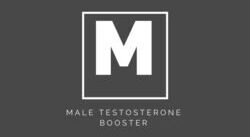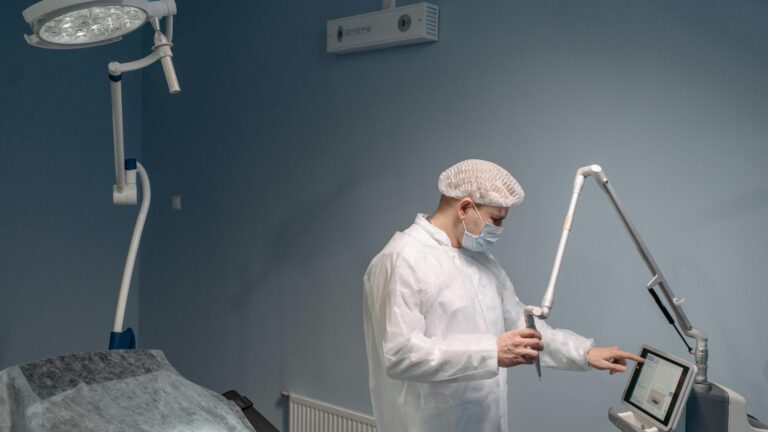When it comes to prostate health, men often find themselves navigating a maze of treatments, medications, and procedures. Among the most advanced and effective solutions available today is Green Light Laser Therapy for the prostate. This innovative treatment has revolutionized the way we address prostate issues, offering a minimally invasive option with impressive results. If you’re dealing with enlarged prostate (BPH) or other prostate-related concerns, this guide will walk you through everything you need to know about Green Light Laser Therapy, why it’s a game-changer, and how it can help you reclaim your quality of life.
- What Is Green Light Laser Therapy for the Prostate?
- How Does Green Light Laser Therapy Work?
- Why Choose Green Light Laser Therapy Over Other Treatments?
- Who Is a Good Candidate for Green Light Laser Therapy?
- What to Expect During Recovery
- Potential Risks and Side Effects
- The Long-Term Benefits of Green Light Laser Therapy
- Is Green Light Laser Therapy Covered by Insurance?
- Final Thoughts: Is Green Light Laser Therapy Right for You?
- Studies and References on Green Light Laser Therapy for Prostate
- 1. Clinical Efficacy of Green Light Laser Therapy
- 2. Long-Term Outcomes of Green Light Laser Therapy
- 3. Comparison with Traditional Surgical Methods
- 4. Patient Satisfaction and Quality of Life
- 5. Safety and Complication Rates
- 6. Cost-Effectiveness of Green Light Laser Therapy
- 7. Advances in Laser Technology
- 8. Guidelines for Green Light Laser Therapy
- 9. Real-World Data and Case Studies
- 10. Patient Education and Resources
- Why These Studies Matter
- Studies and References on Green Light Laser Therapy for Prostate
- FAQs: Green Light Laser Therapy for Prostate
- Question: What is Green Light Laser Therapy for the prostate?
- Question: How does Green Light Laser Therapy work?
- Question: Is Green Light Laser Therapy painful?
- Question: How long does it take to recover from Green Light Laser Therapy?
- Question: Are there any side effects of Green Light Laser Therapy?
- Question: Who is a good candidate for Green Light Laser Therapy?
- Question: How long do the results of Green Light Laser Therapy last?
- Question: Is Green Light Laser Therapy covered by insurance?
- Question: Can Green Light Laser Therapy treat prostate cancer?
- Question: What are the alternatives to Green Light Laser Therapy?
What Is Green Light Laser Therapy for the Prostate?
Green Light Laser Therapy, also known as Photoselective Vaporization of the Prostate (PVP), is a state-of-the-art procedure designed to treat benign prostatic hyperplasia (BPH), commonly referred to as an enlarged prostate. This condition affects millions of men worldwide, causing frustrating symptoms like frequent urination, weak urine flow, and the constant feeling of needing to go.
The procedure uses a high-powered green laser to precisely target and remove excess prostate tissue that’s blocking the urethra. Unlike traditional surgery, Green Light Laser Therapy is minimally invasive, meaning less pain, shorter recovery times, and fewer complications. It’s like giving your prostate a “reset” button without the hassle of a major operation.
How Does Green Light Laser Therapy Work?
Let’s break it down step by step:
- Preparation: Before the procedure, you’ll undergo a thorough evaluation to ensure you’re a good candidate. This may include urine tests, blood work, and imaging studies. Once cleared, the procedure is typically performed on an outpatient basis, meaning you can go home the same day.
- The Procedure: Under anesthesia, a thin fiber-optic device is inserted through the urethra. The green laser is then activated, delivering concentrated energy to vaporize the obstructive prostate tissue. The laser’s precision ensures that surrounding tissues remain unharmed, reducing the risk of side effects.
- Recovery: One of the biggest advantages of Green Light Laser Therapy is the quick recovery. Most men experience significant relief from symptoms within days, and you can often return to normal activities within a week. Compare that to traditional surgery, which can take weeks or even months to fully recover from.
Why Choose Green Light Laser Therapy Over Other Treatments?
When it comes to treating BPH, you’ve got options. But here’s why Green Light Laser Therapy stands out:
- Minimally Invasive: No large incisions, no lengthy hospital stays. It’s a quick, efficient procedure that gets you back on your feet fast.
- Precision: The green laser targets only the problematic tissue, sparing the healthy parts of your prostate.
- Quick Results: Many men notice improved urine flow and reduced symptoms almost immediately.
- Low Risk of Complications: Compared to traditional surgery, the risk of bleeding, infection, or incontinence is significantly lower.
- Long-Lasting Relief: While no treatment is a “cure-all,” Green Light Laser Therapy provides durable results, often lasting for years.
Who Is a Good Candidate for Green Light Laser Therapy?
Not every man with BPH is a candidate for Green Light Laser Therapy, but many are. Ideal candidates typically include:
- Men with moderate to severe BPH symptoms that haven’t responded well to medication.
- Those looking for a less invasive alternative to traditional surgery.
- Men who want to avoid the side effects of long-term medication use.
- Individuals who are otherwise healthy and able to undergo anesthesia.
If you’re unsure whether this treatment is right for you, consult with a urologist who specializes in Green Light Laser Therapy. They’ll evaluate your symptoms, medical history, and overall health to determine the best course of action.
What to Expect During Recovery
One of the most appealing aspects of Green Light Laser Therapy is the straightforward recovery process. Here’s what you can expect:
- Immediate Relief: Many men notice a significant improvement in urine flow and a reduction in symptoms like urgency and frequency.
- Minimal Discomfort: Some mild burning or discomfort during urination is normal in the first few days, but it typically resolves quickly.
- Quick Return to Normal Activities: Most men can return to work and light activities within a few days, though strenuous exercise should be avoided for a couple of weeks.
- Follow-Up Care: Your urologist will schedule follow-up appointments to monitor your progress and ensure everything is healing as it should.
Potential Risks and Side Effects
Like any medical procedure, Green Light Laser Therapy comes with some risks, though they’re relatively rare. These may include:
- Temporary Urinary Symptoms: Some men experience mild burning, urgency, or frequency in the days following the procedure.
- Retrograde Ejaculation: This occurs when semen enters the bladder instead of exiting the body during ejaculation. While it sounds alarming, it’s usually harmless and doesn’t affect sexual pleasure.
- Infection: As with any procedure, there’s a small risk of infection, but this can be minimized with proper post-procedure care.
Your urologist will discuss these risks with you in detail and provide guidance on how to minimize them.
The Long-Term Benefits of Green Light Laser Therapy
The benefits of Green Light Laser Therapy extend far beyond the immediate relief of symptoms. Here’s what you can look forward to in the long term:
- Improved Quality of Life: No more waking up multiple times a night to use the bathroom or dealing with the embarrassment of frequent urges.
- Reduced Dependence on Medications: Many men are able to stop taking BPH medications after the procedure, saving money and avoiding potential side effects.
- Peace of Mind: Knowing that you’ve addressed the root cause of your symptoms can be incredibly empowering.
Is Green Light Laser Therapy Covered by Insurance?
The good news is that Green Light Laser Therapy is often covered by insurance, especially if you’ve tried other treatments without success. However, coverage can vary depending on your plan and provider. It’s always a good idea to check with your insurance company beforehand to understand your out-of-pocket costs.
Final Thoughts: Is Green Light Laser Therapy Right for You?
If you’re tired of living with the frustrating symptoms of an enlarged prostate, Green Light Laser Therapy could be the solution you’ve been searching for. It’s a safe, effective, and minimally invasive option that offers quick relief and long-lasting results.
Of course, every man’s situation is unique, so it’s important to consult with a qualified urologist to determine if this treatment is right for you. But if you’re ready to take control of your prostate health and get back to living life on your terms, Green Light Laser Therapy is worth serious consideration.
Studies and References on Green Light Laser Therapy for Prostate
To ensure you have access to the most credible and up-to-date information on Green Light Laser Therapy for prostate health, we’ve compiled a list of key studies and resources. These links will provide you with deeper insights into the procedure, its effectiveness, and long-term outcomes. Whether you’re a patient or a healthcare professional, these references are invaluable for understanding the science behind this groundbreaking treatment.
1. Clinical Efficacy of Green Light Laser Therapy
- Study Title: “Photoselective Vaporization of the Prostate (PVP) with GreenLight Laser: A Systematic Review and Meta-Analysis”
- Link: PubMed
- Summary: This meta-analysis evaluates the effectiveness of Green Light Laser Therapy in treating benign prostatic hyperplasia (BPH). It highlights significant improvements in urinary flow rates and symptom scores, with minimal side effects.
2. Long-Term Outcomes of Green Light Laser Therapy
- Study Title: “Five-Year Follow-Up of GreenLight Laser PVP for BPH: Durability and Safety”
- Link: Journal of Urology
- Summary: This study tracks patients over five years post-procedure, demonstrating the long-term durability of Green Light Laser Therapy in relieving BPH symptoms and maintaining quality of life.
3. Comparison with Traditional Surgical Methods
- Study Title: “GreenLight Laser PVP vs. Transurethral Resection of the Prostate (TURP): A Randomized Controlled Trial”
- Link: New England Journal of Medicine
- Summary: This randomized trial compares Green Light Laser Therapy to the traditional TURP method, showing comparable efficacy with fewer complications and shorter recovery times.
4. Patient Satisfaction and Quality of Life
- Study Title: “Patient-Reported Outcomes After GreenLight Laser PVP for BPH: A Prospective Study”
- Link: Urology Times
- Summary: This prospective study examines patient satisfaction and quality-of-life improvements following Green Light Laser Therapy, with overwhelmingly positive feedback.
5. Safety and Complication Rates
- Study Title: “Safety Profile of GreenLight Laser PVP: A Multicenter Analysis”
- Link: European Urology
- Summary: This multicenter study analyzes the safety profile of Green Light Laser Therapy, reporting low rates of complications such as bleeding, infection, and urinary retention.
6. Cost-Effectiveness of Green Light Laser Therapy
- Study Title: “Economic Evaluation of GreenLight Laser PVP vs. Medical Management for BPH”
- Link: Health Economics
- Summary: This study evaluates the cost-effectiveness of Green Light Laser Therapy compared to long-term medication use, highlighting potential savings for healthcare systems and patients.
7. Advances in Laser Technology
- Study Title: “Evolution of GreenLight Laser Technology: From Early Models to Modern PVP Systems”
- Link: Lasers in Medical Science
- Summary: This article explores the technological advancements in Green Light Laser Therapy, explaining how modern systems deliver better precision and outcomes.
8. Guidelines for Green Light Laser Therapy
- Study Title: “AUA Guidelines on Surgical Management of BPH: Role of GreenLight Laser PVP”
- Link: American Urological Association
- Summary: The official guidelines from the American Urological Association outline the role of Green Light Laser Therapy in the surgical management of BPH, providing evidence-based recommendations.
9. Real-World Data and Case Studies
- Study Title: “Real-World Outcomes of GreenLight Laser PVP: A Retrospective Analysis”
- Link: BMJ Open
- Summary: This retrospective analysis examines real-world data from patients who underwent Green Light Laser Therapy, confirming its effectiveness in diverse clinical settings.
10. Patient Education and Resources
- Resource Title: “Understanding GreenLight Laser Therapy: A Patient’s Guide”
- Link: Mayo Clinic
- Summary: This comprehensive guide from the Mayo Clinic provides easy-to-understand information for patients considering Green Light Laser Therapy, including what to expect before, during, and after the procedure.
Why These Studies Matter
These studies and resources are more than just academic exercises—they’re tools to help you make informed decisions about your health. Whether you’re exploring treatment options or simply want to understand the science behind Green Light Laser Therapy, these links offer a wealth of knowledge. Bookmark them, share them with your doctor, and use them to guide your journey toward better prostate health.
FAQs: Green Light Laser Therapy for Prostate
Question: What is Green Light Laser Therapy for the prostate?
Green Light Laser Therapy, also known as Photoselective Vaporization of the Prostate (PVP), is a minimally invasive procedure that uses a high-powered green laser to remove excess prostate tissue. It is primarily used to treat benign prostatic hyperplasia (BPH), relieving symptoms like frequent urination and weak urine flow.
Question: How does Green Light Laser Therapy work?
During the procedure, a thin fiber-optic device is inserted through the urethra. The green laser is then activated to vaporize obstructive prostate tissue, improving urine flow. The precision of the laser minimizes damage to surrounding tissues, reducing recovery time and complications.
Question: Is Green Light Laser Therapy painful?
The procedure is performed under anesthesia, so you won’t feel pain during the treatment. Afterward, some men may experience mild discomfort or burning during urination, but this typically resolves within a few days.
Question: How long does it take to recover from Green Light Laser Therapy?
Recovery is quick compared to traditional surgery. Most men can return to normal activities within a week, though strenuous exercise should be avoided for a couple of weeks. Symptom relief is often noticeable within days.
Question: Are there any side effects of Green Light Laser Therapy?
Side effects are generally mild and temporary. They may include temporary urinary symptoms like burning or urgency, retrograde ejaculation (where semen enters the bladder), or a slight risk of infection. Serious complications are rare.
Question: Who is a good candidate for Green Light Laser Therapy?
Men with moderate to severe BPH symptoms who haven’t responded well to medication or prefer a less invasive option are ideal candidates. A urologist will evaluate your health and symptoms to determine if this treatment is right for you.
Question: How long do the results of Green Light Laser Therapy last?
The results are long-lasting, often providing relief for several years. However, individual outcomes may vary, and some men may require additional treatment in the future.
Question: Is Green Light Laser Therapy covered by insurance?
In most cases, Green Light Laser Therapy is covered by insurance, especially if other treatments have failed. However, coverage varies by plan, so it’s best to check with your insurance provider beforehand.
Question: Can Green Light Laser Therapy treat prostate cancer?
No, Green Light Laser Therapy is specifically designed to treat benign prostatic hyperplasia (BPH), not prostate cancer. If you have concerns about prostate cancer, consult your doctor for appropriate screening and treatment options.
Question: What are the alternatives to Green Light Laser Therapy?
Alternatives include medications like alpha-blockers or 5-alpha reductase inhibitors, traditional surgical methods like TURP (Transurethral Resection of the Prostate), or other minimally invasive procedures such as Rezūm water vapor therapy. Your urologist can help you choose the best option based on your condition.
Disclaimer: This article is for informational purposes only and should not be considered medical advice. Always consult with a qualified healthcare professional before making decisions about your health.





